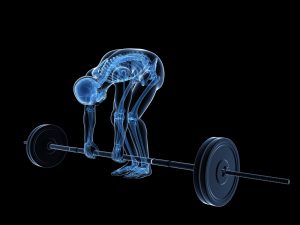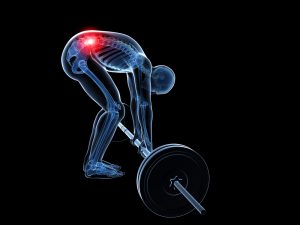 If you have clocked enough hours under the bar, you know that lower-back injuries can easily derail your strength training. But if you’re in the pre-season, you don’t always have the luxury of taking time off from training. When that’s the case, intelligently programmed back-friendly modifications are a necessity.
If you have clocked enough hours under the bar, you know that lower-back injuries can easily derail your strength training. But if you’re in the pre-season, you don’t always have the luxury of taking time off from training. When that’s the case, intelligently programmed back-friendly modifications are a necessity.
Here are five strategies to train through lower back pain while still making gains in the gym.
1. Assess the Severity
Dominating sets can wait a day. First, you have to figure out whether you are dealing with just another muscle tweak, or an excruciatingly painful amount of structural and functional damage.
If you are having any of the following symptoms, your best bet is to get in touch with your primary physician or orthopedist:
- — Tingling or numbness
- — Loss of sensation
- — Loss of motor control (inability to coordinate voluntary movements)
- — Loss of bowel or bladder function
- — Severe immobility—unable to walk
2. Avoid Hip-Hinging Movements
In addition to avoiding the position you were in when you got hurt, stay off these movements until you earn the right to program them back into your routine:
- — Deadlift
- — Barbell Row
- — Good Mornings
- — Full Range Crunches/Sit-Ups
- — Back Extensions
- — Low Bar Back Squat
- — Leg Press
3. Avoid Direct Spinal Compression
Direct spinal compression refers to loads placed on top of the spine—for example, a high or lower bar position in the Squat. Compressive loading increases shear forces in the lumbar spine and increases core instability due to the high center of gravity, making it one of the riskiest loaded positions for those recovering from spinal insult.
To go heavy, avoid injury and keep the intensity high, keep the load beneath the level of your current pain or site of injury. Unless you have short arms, the easiest way to keep your center of gravity low is by placing loads in the hands.
4. Embrace Single-Leg Work
Single-leg work is essential to strength and hypertrophy gains. For your program, first do heavy single-leg work, then movements out of the split stance for strength and power, and finally, bilateral symmetrical work with extended sets, finishers and conditioning work.
The key is to get as much work out of these single-leg movements as possible in order to pre-exhaust your legs and move into the next phase of the training session. Choose one hip-dominant and one knee-dominant movement for each of the three subcategories of your workout (single-leg, split stance, bilateral).
5. Practice Proper Posture
Protect your back by keeping your ribs down and in a neutral position. This will position your core muscles for optimal activation and further stabilize your spine. You can also tighten the muscles around your midsection by engaging your glutes and lats.
Source: www.stack.com; John Rusin; November 28, 2014.









